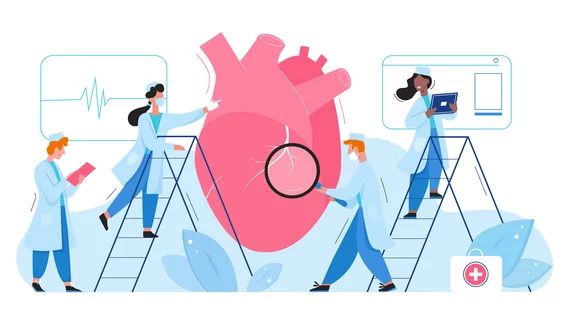New York Valves, CRF’s newest cardiology conference, makes heart team collaborations a priority
The Cardiovascular Research Foundation (CRF) has provided an updated look at its newest conference, New York Valves: The Structural Heart Summit.
New York Valves, scheduled for June 5-7, 2024, replaces the Transcatheter Valve Therapy (TVT) conference that CRF hosted for many years. It is expected to attract clinical cardiologists, interventional cardiologists, cardiac surgeons, imaging specialists and other key members of the heart team from all over the world.
One key difference between New York Valves and TVT is an increased focus on inclusivity and collaboration. Martin B. Leon, MD, CRF’s founder, highlighted this step forward in a preview of the new conference.
“This is an exciting evolution of what we’ve done in the past, taking us to a completely difference space in managing the lifelong journey of patients with valvular heart disease,” Leon, a veteran interventional cardiologist and professor of medicine at Columbia University Irving Medical Center, explained. “This meeting doesn’t just deal with transcatheter therapy, but introduces all of the imaging expertise that is needed. It’s a meeting for our surgical colleagues, who have a variety of new techniques and treatments we need to embrace. It brings in the clinical cardiologists that diagnose valvular heart disease and manages these patients and it really elevates the heart team as being the central focus for decision-making and patient care.”
Transcatheter aortic valve replacement (TAVR), structural heart disease, interventional cardiology and cardiac imaging are just some of the topics that will be explored during 12 late-breaking clinical trial presentations and six featured clinical science presentations.
In addition, researchers will present more than 100 abstracts with attendees.
Late-breaking clinical trials announced for New York Valves: The Structural Heart Summit
Wednesday, June 5: TAVR
11:00 a.m. — 12:00 p.m. ET
A Randomized Comparison of TAVR and SAVR in Low-Risk Patients Aged 70 Years or Younger: Results From the NOTION-2 Trial
Ole De Backer
Predictors of Bioprosthetic Valve Dysfunction From the Randomized SMART Trial
Howard C. Herrmann
Impact of Cerebral Embolic Protection Devices on Disabling Stroke After Transcatheter Aortic Valve Replacement: Results From the STS/ACC TVT Registry
Neel Butala
Late Clinical Outcomes With Balloon Expandable Valves in Small Annulus Patients From the PARTNER Trials
Rebecca T. Hahn
Thursday, June 6: Mitral and Tricuspid
11:00 a.m. — 12:00 p.m. ET
T-TEER in a Broad Range of Anatomies: Results From the TRILUMINATE Pivotal Trial
Brian K. Whisenant
Impact of Tricuspid Regurgitation on Right Heart Remodeling: Insights From the TRILUMINATE Pivotal MRI and CT Imaging Substudy
Joao L. Cavalcante
Surgical Mitral Valve Replacement With a Novel Polymeric Valve: 30-day Results From a Global Clinical Study of the Foldax TRIA Mitral Valve
Isaac George
Incidence, Predictors, and Management of Conduction Disturbances After Transcatheter Tricuspid Valve Replacement: The TRIPLACE Registry
Andrea Scotti
Friday, June 7: TAVR and Mitral 2
11:00 a.m. — 12:00 p.m. ET
Impact of Bioprosthetic Valve Performance on 5-year Clinical Outcomes in Patients at Intermediate or Greater Surgical Risk
Steven J. Yakubov
Evaluating Mitral TEER in the Management of Moderate Mitral Regurgitation Among Heart Failure Patients
Anita W. Asgar
Transcatheter Edge-to-Edge Repair vs Transcatheter Mitral Valve Replacement in Patients With Primary Mitral Regurgitation and Red Zone Anatomy: A Propensity Score-Matched Analysis
Sebastian Ludwig
Mid-term Outcomes of Balloon Expandable TAVR for the Treatment of Failed Bioprosthetic Valves in the United States
Tsuyoshi Kaneko
Click here for additional details from CRF about New York Valves: The Structural Heart Summit.

